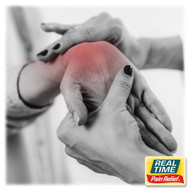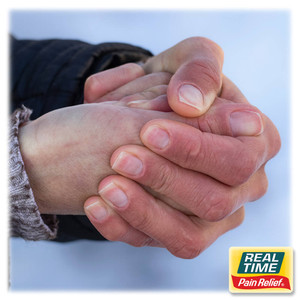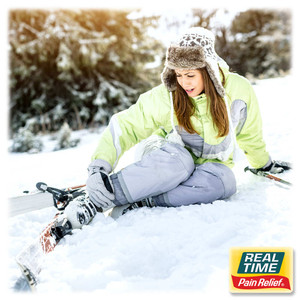Carpal Tunnel Syndrome: Natural Support for Wrist and Hand Pain
Posted by Dennis R Escalera on 1st Nov 2025
Carpal Tunnel Syndrome (CTS) is a common condition that affects millions of people worldwide, especially those who perform repetitive hand and wrist movements, such as typing, using a mouse, or handling tools. The syndrome occurs when the median nerve, which runs from the forearm into the hand, becomes compressed at the wrist, leading to pain, numbness, tingling, and sometimes weakness in the hand and fingers.
While traditional treatments often involve braces, medications, or surgery, many people find relief through topical creams and lotions made with nature’s ingredients, offering a gentle, non-invasive approach to easing discomfort.
Understanding Carpal Tunnel Syndrome
The carpal tunnel is a narrow passageway in the wrist made up of bones and ligaments. When this space becomes compressed, pressure on the median nerve causes symptoms such as:
- Tingling or numbness in the thumb, index, middle, and half of the ring finger
- Pain radiating up the forearm
- Weakness or clumsiness in the hand
- Worsening discomfort during repetitive tasks
Risk factors include repetitive hand use, prolonged typing or texting, poor wrist posture, pregnancy, and certain medical conditions like diabetes or rheumatoid arthritis.
How Workplace Habits Contribute
Modern work environments often require prolonged use of keyboards, touchscreens, and other hand-intensive tools. Poor ergonomics, such as wrists bent upward while typing, can increase pressure within the carpal tunnel. Over time, this strain leads to inflammation, swelling, and nerve irritation.
Even simple daily tasks like opening jars, using smartphones, or driving can aggravate the condition if proper wrist alignment and movement habits aren’t maintained.
Conventional Treatment Options
Medical management for CTS may include:
- Wrist braces or splints to maintain neutral wrist position
- Physical therapy exercises to improve flexibility and reduce compression
- Anti-inflammatory medications or corticosteroid injections
- Surgery in severe cases to relieve pressure on the median nerve
While these options are sometimes necessary, many people seek complementary solutions to manage mild to moderate CTS symptoms without invasive procedures.
Natural Topical Relief for CTS
Topical creams and lotions made with nature’s ingredients can provide a soothing and anti-inflammatory effect directly at the site of pain. Applied consistently, they help reduce discomfort, improve blood circulation, and relax muscles in the wrist and forearm.
Key ingredients include:
- Turmeric (Curcumin): A natural anti-inflammatory that can reduce nerve irritation and swelling.
- Menthol: Provides a cooling effect that temporarily relieves pain and tingling.
- MSM (Methylsulfonylmethane): Supports connective tissue health and reduces inflammation in joints and tendons.
- Arnica Montana: Soothes soreness and helps decrease swelling.
- Camphor: Promotes circulation and delivers a gentle warming sensation to ease stiffness.
- Aloe Vera: Hydrates the skin and enhances the absorption of active ingredients while calming irritation.
By targeting the wrist and forearm, these ingredients help alleviate pressure and discomfort naturally, supporting everyday function without relying solely on medication.
Lifestyle and Self-Care Strategies
To complement topical treatments, the following habits can help prevent CTS flare-ups:
- Ergonomic Setup: Keep wrists neutral while typing or using a mouse, and ensure keyboards and work surfaces are positioned correctly.
- Frequent Breaks: Take short breaks to stretch and move the fingers, hands, and wrists every 30–45 minutes.
- Gentle Stretching: Wrist flexor and extensor stretches can relieve tension and improve circulation.
- Strengthening Exercises: Hand and forearm exercises help support wrist stability and reduce nerve compression.
- Cold or Warm Therapy: Applying a warm compress before topical lotion use can relax tight muscles, while cold packs reduce swelling.
Combining these practices with natural topical creams and lotions enhances their effectiveness, providing multi-layered support for daily comfort and hand function.
When to Seek Professional Help
If numbness, tingling, or weakness persists, consult a healthcare provider. Persistent symptoms may indicate severe nerve compression that requires professional intervention. Early management, however, often allows for significant improvement with lifestyle adjustments and topical treatments.
Final Thoughts
Carpal Tunnel Syndrome can interfere with work, hobbies, and daily activities, but relief is possible. By combining proper ergonomics, stretching, and topical pain relief formulated with nature’s ingredients, you can reduce discomfort, improve function, and protect your hands and wrists from further strain.
From desk to door, these natural solutions empower you to maintain hand mobility and stay pain-free — letting you focus on the tasks that matter most.
References:
- Mayo Clinic: https://www.mayoclinic.org/diseases-conditions/carpal-tunnel-syndrome/symptoms-causes/syc-20355603
- Cleveland Clinic: https://my.clevelandclinic.org/health/diseases/4005-carpal-tunnel-syndrome
- National Library of Medicine: https://pmc.ncbi.nlm.nih.gov/articles/PMC4143510/





